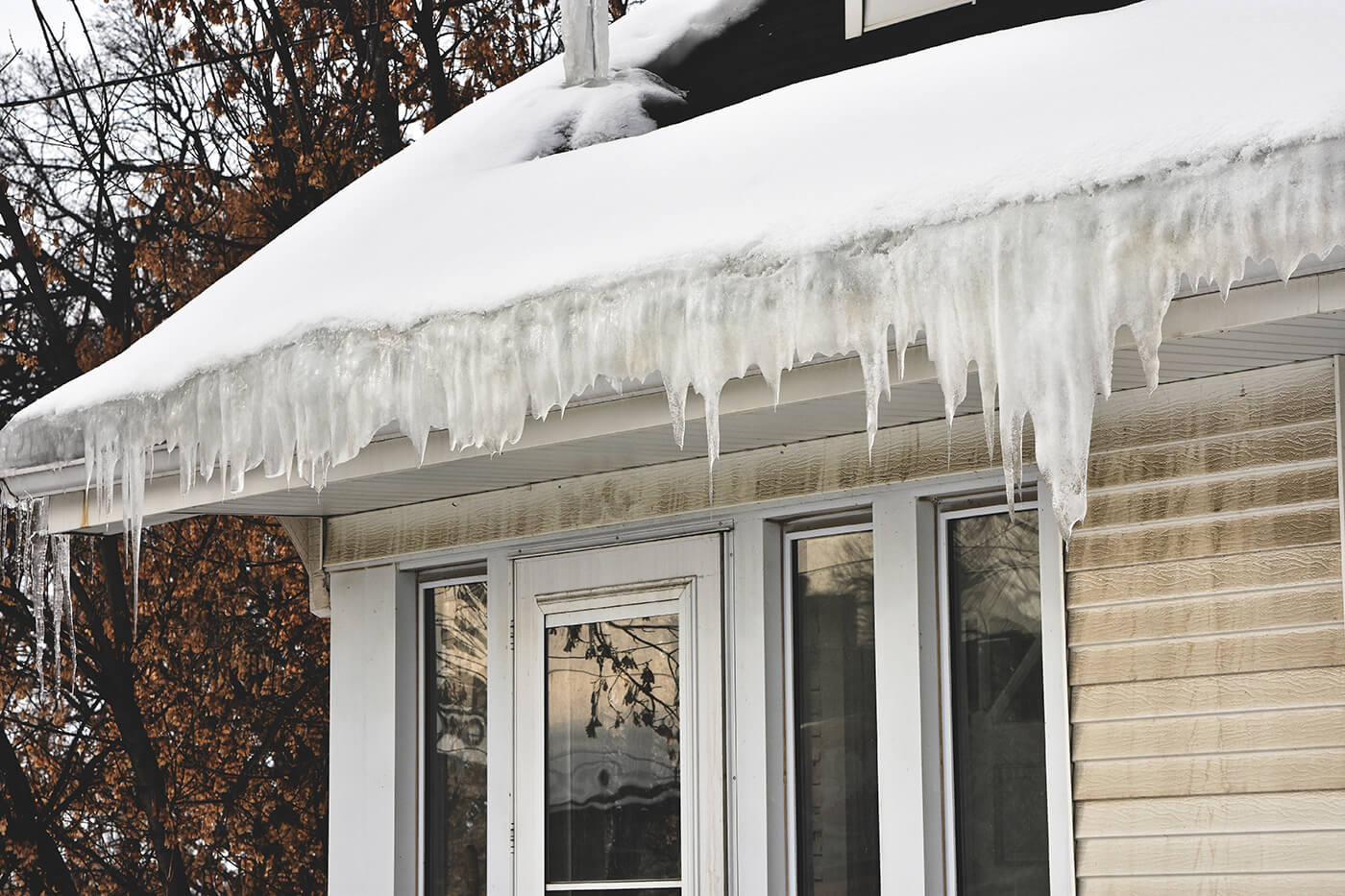Most people don’t give much thought to moisture levels in their homes until issues arise. Excess moisture can lead to problems like mold, mildew, water damage, and structural damage. Controlling moisture is crucial for a healthy living space, whether it’s from a leaky roof, poor ventilation, or high humidity. Fortunately, there are simple steps you can take to address excess moisture and maintain a healthy, comfortable home environment. We’ll share seven practical ways to reduce moisture at home, helping you address common issues and maintain a safe, comfortable environment for your family.
Investigate and Mediate
Identify the areas of your home that are most prone to moisture buildup.
To maintain a dry and comfortable home environment, it’s crucial to identify and address areas prone to moisture buildup. Leaky plumbing is a common culprit, so inspect pipes and fittings for leaks regularly. Beyond plumbing, several key areas require attention to prevent moisture-related issues, like mold growth and structural damage.
The bathroom, with its daily water usage, is a primary concern. Kitchens, with frequent cooking and dishwashing, can also accumulate moisture. Laundry rooms pose another risk since wet clothes can quickly lead to moisture buildup.
Additionally, basements often experience high humidity levels due to their underground location and lack of ventilation, making them susceptible to various problems. Keep an eye on these moisture-prone areas and take proactive measures. You can prevent the buildup of unwanted moisture in your home and maintain a healthier living space.
Install a dehumidifier in those areas.
A dehumidifier could be the solution for areas prone to moisture buildup. These devices pull in humid air and pass it over a cooling coil. As the air cools, moisture condenses into water droplets, which collect in a reservoir or are drained away through a hose. The dehumidified air is then reheated and released back into the room, reducing humidity and making the air more comfortable.
Not only does this protect your home from damage, but it also improves indoor air quality and makes your living space more comfortable. Choosing a dehumidifier that matches the size of the space you want to dehumidify is crucial. Otherwise, it will not work efficiently.
Some models even have an automatic shut-off feature for when the desired humidity level is reached. With some quick research, you can find the perfect dehumidifier for your needs and create a more comfortable home environment.
Keep Out The Elements
Inspect your roof and gutters for leaks that could cause water damage.
Regular inspection and maintenance of your roof and gutter system are crucial for preventing water damage to your home. Leaky roofs are often caused by wear and tear over time. Roofing materials such as shingles or tiles can deteriorate due to exposure to weather elements like sunlight, rain, wind, and temperature fluctuations. This degradation weakens the roof’s integrity, making it more susceptible to leaks.
Look for signs of damage like missing shingles or cracks in seams. These areas can allow water to penetrate your home. Even a tiny gap can let water seep through, leading to leaks. Promptly repair any issues to avoid costly water damage repairs down the line.
Clogged or damaged gutters can also lead to water infiltration into your foundation or walls. Gutters are designed to channel water away from your home. Leaves, twigs, and other debris can accumulate in gutters over time, blocking the water flow. When gutters are clogged, rainwater has nowhere to go and may overflow, spilling down the sides of the house and causing water damage to the exterior walls and foundation.
Ensure your gutters are clear of debris and in good condition to reduce the risk of water damage. Regular cleaning and repairs will help maintain the integrity of your gutter system and protect your home from water-related issues.
Make sure all your windows and doors are properly sealed.
By preventing outside air and moisture entry, you can enhance your home’s comfort and energy efficiency. Carefully examine the areas around windows and doors for any visible gaps or cracks where air and moisture could enter. If not adequately sealed, windows and doors can become sources of unwanted moisture infiltration. During warm weather, poorly sealed openings may lead to condensation on walls and windows. In colder months, improper sealing can reveal itself through drafts and increased heating costs.
Easily seal windows and doors using weatherstripping or caulk. Weatherstripping is a flexible material applied around the edges of doors and windows to create a tight seal. If the existing weatherstripping is worn, cracked, or damaged, remove it and replace it with new weatherstripping. Ensure it creates a tight seal when the window or door is closed.
Caulk is a sealant used to fill cracks and gaps. Both weatherstripping and caulk are readily available at hardware stores, making it convenient for homeowners to tackle the task themselves. If you’re unsure about your sealing job or notice persistent drafts or moisture issues, consider hiring a professional inspector or contractor to assess and address any sealing problems. They can provide expert advice and ensure a proper seal.
Prevention
Clean your air ducts and vents to reduce moisture buildup inside the house.
Most houses have a ductwork system that carries air throughout the home. The air ducts are usually made of metal or plastic and are connected to vents that lead to the outside. One way to prevent this is through regular sanitization or cleaning the air ducts and vents. This will help remove the dirt and dust that collect over time, ultimately preventing moisture from building up inside the house.
Over time, air ducts can accumulate dust, pollen, pet dander, mold spores, and other contaminants. When debris accumulates within the ductwork, it can create blockages or obstructions that restrict airflow. This restriction can lead to moisture buildup within the ducts, especially in areas where condensation often occurs.
This buildup can reduce the system’s efficiency and cause health problems for the people who live in the home. When the HVAC system circulates air through these ducts, these particles can be released into the air inside your home, leading to respiratory issues, allergies, and other health problems.
Use fans to circulate air throughout the house, especially during humid weather.
One of the best ways to combat humid weather is to circulate air throughout your home. Fans help reduce the air’s moisture content, creating a more comfortable environment for you and your family. When air circulates, it helps to disperse moisture and distribute it more evenly throughout the environment. This process facilitates the evaporation of moisture from surfaces, such as walls and floors, into the air. As a result, the overall humidity levels in the space decrease, creating a drier and more comfortable atmosphere.
Ceiling fans are especially effective at circulating air and can be used with other fans to create a cross-breeze effect. However, using fans properly is crucial to avoid potential damage to your home and ensure safety. Always place fans in well-ventilated areas, away from any possible water sources, to prevent accidents. Never leave a fan running unattended, as this could pose a fire hazard.
Clean up any spills or water damage as soon as possible.
Managing spills, particularly in households with children or pets, can be daunting. When left unattended, spills can seep into porous materials, contributing to elevated humidity levels and fostering conditions conducive to mold and mildew growth. You reduce moisture from surfaces by promptly cleaning up spills, mitigating the risk of moisture-related issues.
In addition to prompt cleanups, you should fix any water leaks as soon as they’re discovered. Even a small drip can cause water to accumulate in areas where it shouldn’t, such as behind walls, under flooring, or in ceilings. This moisture can create an ideal mold and mildew growth environment, compromise the building materials’ structural integrity, and lead to costly damage repairs. Taking simple steps to reduce moisture in your home can help keep mold and mildew at bay.
Improving indoor air quality and reducing the risk of mold growth begins with reducing moisture levels in your home. Enhancing air circulation is a critical strategy in achieving this goal. Whether it’s opening windows and doors regularly, utilizing fans to promote airflow, or investing in a dehumidifier to remove excess moisture from the air, these simple steps can significantly contribute to creating a drier environment less conducive to mold spores.
If you haven’t taken proactive steps to reduce moisture buildup in your home, now is the perfect time to consider a thorough mold inspection from Pur360. Our expert team specializes in identifying and addressing mold issues before they escalate. We leave no corner unchecked, ensuring that potential mold growth is detected and addressed promptly.



